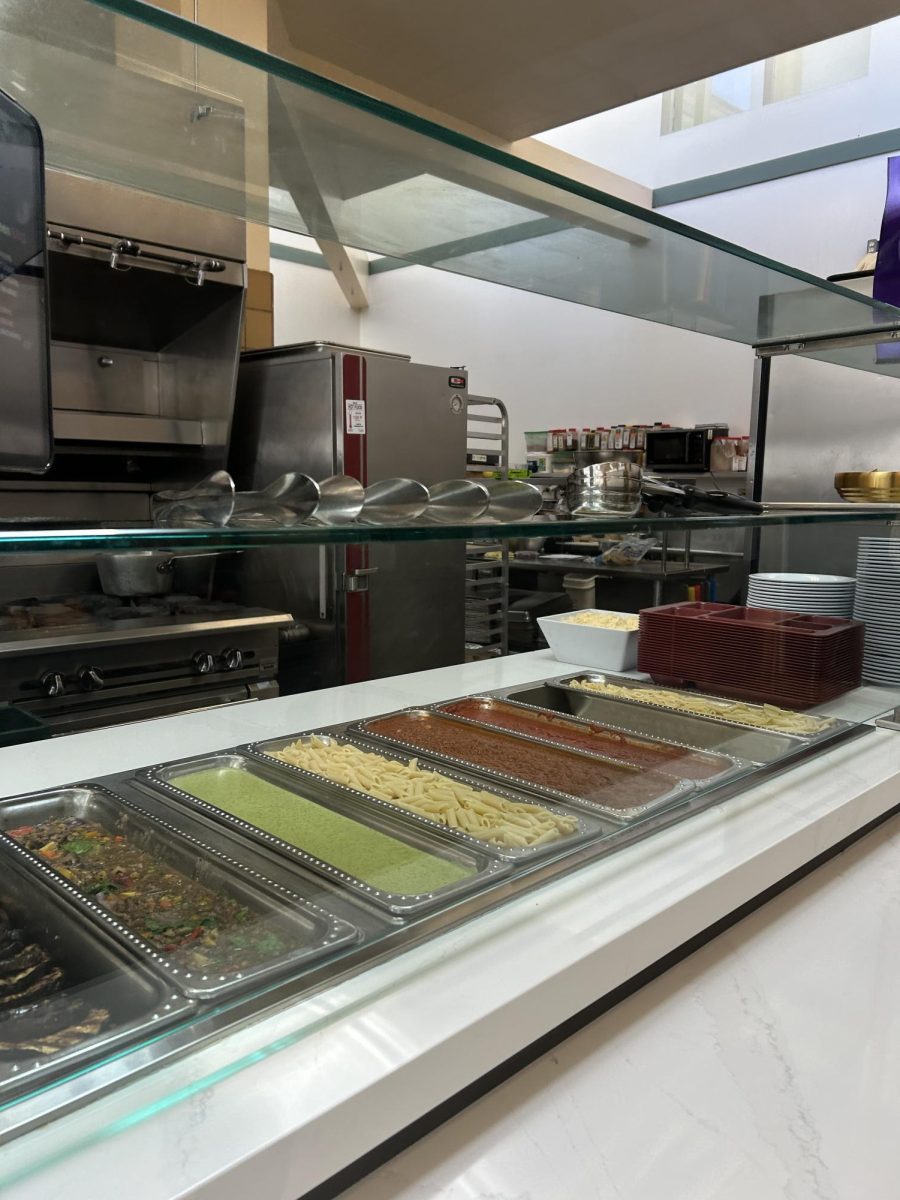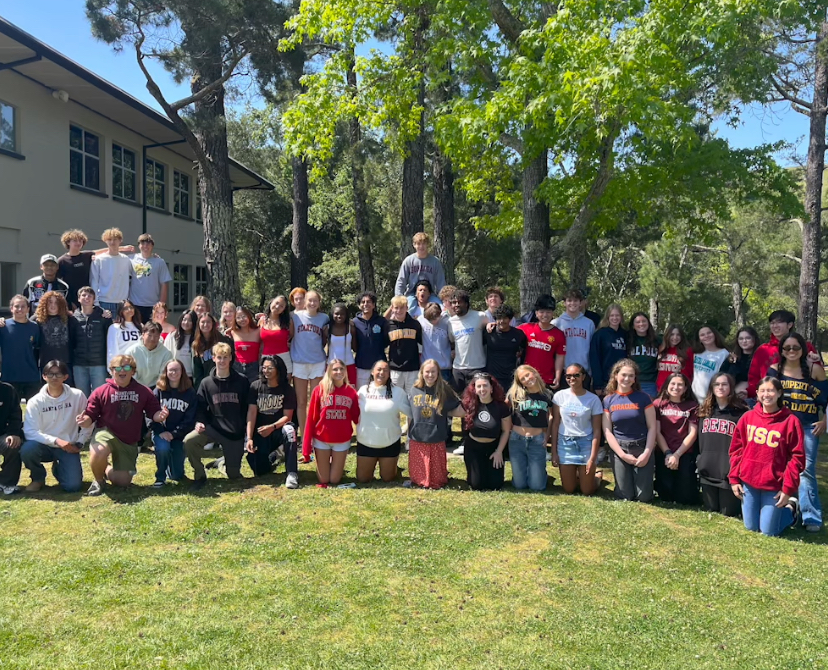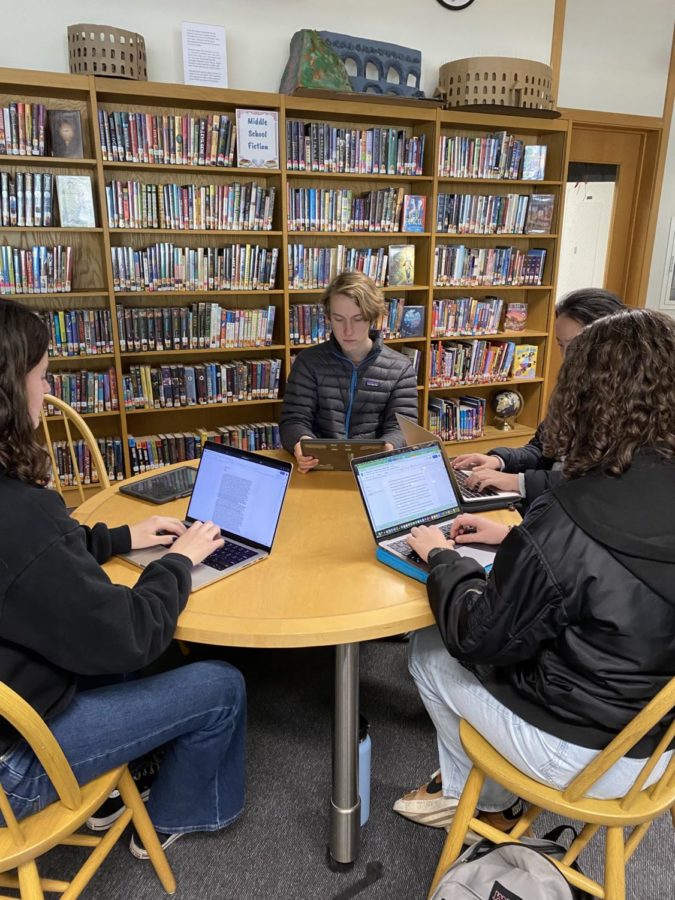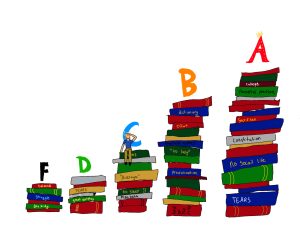San Domenico implements three digital AP exams for 2022-2023 school year
Students work on practicing digital assignments for online exams in AP English classes and AP U.S. History.
February 7, 2023
San Domenico is piloting three digital AP exams for the 2022-2023 school year, a decision that was made after several rounds of testing from the College Board.
San Domenico did not participate in earlier programs to test out digital AP testing in schools for the 2021-2022 school year. San Domenico administrators determined that due to the preliminary pilots conducted, the change would be well-researched by the time administrators decided about implementing digital exams at SD. Several digital exams are offered by the College Board for a second pilot, and San Domenico has elected to implement these for the 2022-2023 school year.
Kate Reeser, the director of the Upper School and assistant head of school for academics at San Domenico, explained that the school was moving towards digital testing anyway.
“The reason we decided to [pilot AP exams] is because the SAT and PSAT testing is going to be digital no matter what, and AP testing is going to be digital no matter what in a few years,” Reeser said. “I wanted to ease our students into it to just sort of see how it goes this year, and then we’ll be adding more next year and the following year after that.”
Digital testing has been increasingly popular in recent years with standardized tests moving towards online Tests such as the SAT and PSAT have been phasing in digital options since this previous school year—something that was observed by many students taking the PSAT in the fall. According to the CollegeBoard website, all PSAT tests for juniors and sophomores will be administered digitally by fall 2023. Digital AP tests were the natural next step.
The classes that are currently requiring digital exams at San Domenico are AP English Language and Composition, AP English Literature and Composition, and AP U.S. History. College Board is including several other digital tests in the future, but it is uncertain which will be later incorporated into San Domenico’s AP exams.
The decision to add digital exams at SD was made with research from the previous pilots, and made after careful consideration from San Domenico staff. Shana Krallman, the Testing Coordinator at San Domenico, said that the benefits and drawbacks have been evaluated by a team to ensure that the decision was made for the best of the school based on the information provided by the College Board.
For AP classes with digital exams, teachers have been incorporating strategies to adjust to online test-taking. Sonya Evans, the AP English Literature teacher at San Domenico, is one such teacher that added lessons on many of these strategies to her curriculum.
“In terms of my class, we have adjusted to doing all of our practice using the computer cart computers, which is what they’ll be using,” Evans said. “We’ve been talking about some of the strategies that they need to use, some of the differences between handwriting an essay and typing it.”
A large component of the AP tests moving to digital exams is the new skill sets required. With writing-based exams like AP English Language and Literature, knowing how to type quickly and effectively becomes an asset due to the time constraints for writing. Although this can be welcome for those who are confident in their typing abilities, some students see the typing addition as a new obstacle.
Maple Silverstein, a junior taking AP English Language and Composition as well as AP U.S. History, believes her lack of typing skills may be a disadvantage since she never learned to type.
“It’s been really stressing me out trying to learn how to type, and so I’ve been having to focus more on learning how to type fast and transitioning all my ideas to online,” Silverstein said.
For students that are not familiar with typing when taking tests such as the AP tests and standardized testing, the move to digital may be another obstacle for the already-stressful leadup to AP tests. Another difficult aspect that teachers have observed is the tendency to self-edit while writing online rather than on paper.
“The biggest challenge, I think, is that generally when we’re typing something we are editing as we go and you just don’t have time to do that in 40 minutes,” Evans said.
On the other hand, digital tests also provide benefits to students, teachers, and even the readers for AP tests. Jacob Ellis, a sophomore at San Domenico, says that he’s actually very excited about the tests moving to online.
“I won’t have to get paused by all my hand cramps when I’m using my pencil, nor will I get an indent from wooden pencils in my hand afterwards,” Ellis said.
The switch to digital has also greatly benefited readers, Evans said, who is also a reader for the AP Lit exam. Readers for AP exams go through and score essays, a process that is much improved by typing instead of handwriting.
“As a reader, some of the handwriting was really hard to read so it’s nice to see that type-to-page,” Evans added. “But also, as a reader, I have to remind myself that my expectation for the printed word is higher than the handwritten words. So I have to adjust and remind myself this is still that first draft.”
Krallman also notes that the College Board added many beneficial aspects for timing the tests when moved to a digital model.
“College Board has stated they are offering a more customized experience for test takers as each test will control its own timing, which may improve the experience should it take students longer to review instructions or complete personal information,” Krallman said, mentioning that timing starts when the student begins the test.
Although there have been mixed benefits and drawbacks to making AP exams digital, the decision was ultimately made based on the information provided from previous pilot programs and was well-thought out by administrators. Krallman and Reeser both underline the fact that our society is moving towards incorporating more technology, and that the exams becoming digital was the next step. Although it is a difficult change for some, San Domenico is already beginning to adjust to the new digital normal.






























